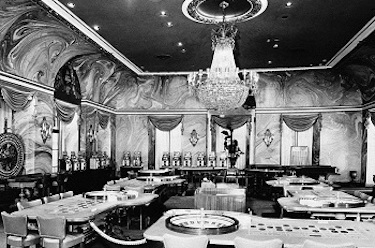 ***Updated: November 15, 2018***
***Updated: November 15, 2018***
Many thought of hitting a 20 to turn an Ace to have a story to tell for the rest of their lives, or dreamt of changing a 19 into a perfect 21, Double Exposure Blackjack turning these fantasies into reality. In this variation, dealers’ hole cards are exposed, opening up player hands to tons of exciting new possibilities.
Richard Arnold Epstein began his working life in space communications and was employed by the likes of TRW Space Technology Laboratories, Hughes Aircraft, and Jet Propulsion Laboratory, also earning checks from casinos in Macao and Greece. Epstein took his scientific knowledge and applied mathematical analysis to everything he could think of, including matching pennies and Tic-Tac-Toe, pouring it into a definitive examination of gaming and probability called The Theory of Gambling and Statistical Logic.
One of the amusements Epstein’s numbers tore apart was blackjack, to which he devoted an entire chapter. In the book he proposed an intriguing theory: how would results be affected if players could see both dealer cards? Double Exposure had now been born, otherwise known by it’s other monikers of Dealer Disclosure and Face Up 21.
Rules
Knowing what’s needed to beat croupiers unquestionably presents a significant advantage to customers, so to re-balance odds, Double Exposure imposes similarly important changes to conventional rules. For starters, the House wins all ties, except for player blackjacks which still push if matched. Furthermore, blackjacks don’t pay 3:2, or the increasingly common 6:5, instead at even money like all other winning hands.
In addition, eight-deck shoes are utilized, which always increases House advantage slightly, participants only allowed to split once. Without the mystery of hole cards, Insurance
is obviously not offered, which is a huge benefit to those foolish enough to normally take it.
These changes bring House edge to about 0.7%, a tick above their advantage in the standard version when applying optimal basic 21 strategy. Unlike other variations, Double Exposure translates easily online and therefore, several different sets of rules are found.
Among them are Double-Downs restricted to 9, 10, or 11, doubling after a split perhaps permitted. Occasionally, solely identical ten-value cards may be split, rules regarding dealers standing on Soft 17s
fluctuating.
Winning Strategy
Exposed hole cards simplify the game to its fundamental element: vanquish the dealer. If showing a 18, 19 or 20 and the player hasn’t beaten it, they can just hit until the hand wins or busts. That is raw, no-brainer decision making that isn’t found elsewhere.
Alternatively, the basic strategy chart for Double Exposure is more complicated than normal and such tried-and-true methods such as “always splitting aces” must be forgotten. For example, with a dealer 11, 17, 18, 19 or 20, two Aces should be combined into a single hand.
Seasoned professionals know that a thorough understanding of doubling-down and splitting strategies will ensure this is one of the friendliest tables at a casino. It just takes time to fully fathom new approaches.
Final Notes on Richard Epstein
Sadly, Epstein never got around to patenting his game. In fact, he wandered off into writing books about Marlon Brando that were co-authored by the Hollywood legend’s wife, also publishing works about Cal Rodgers who made the first coast-to-coast airplane flight in 1911.
Back in The Theory of Gambling and Statistical Logic, Epstein merely wrote two paragraphs on what he called Zweikartenspiel, a German word for two card game
. He proposed another variant dubbed Grayjack using 13 cards with the goal of reaching a total of 13, decks consisting of 1 Ace, 2 Twos, 2 Threes, 2 Fours, 2 Fives, and 4 Sixes, the Ace holding a value of either one or seven.
Needless to say, Epstein’s fringe creations didn’t catch on with the masses.
